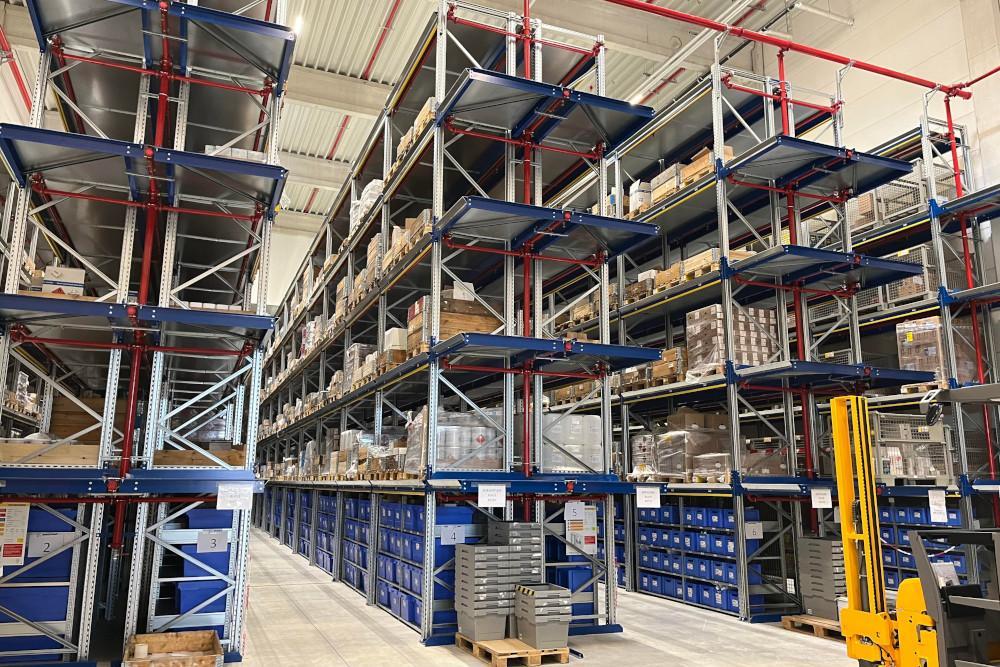
LONDON—Supply chain pain has persisted since the COVID-19 pandemic, but some stakeholders in the aftermarket expect things to get worse before they get better.
During an audience poll at Aviation Week’s recent MRO Europe event, 40% of respondents believed their supply chain challenges will stay the same over the next six months while 32% expected challenges to get even worse.
According to Jim O’Sullivan, vice president of business development at aircraft parts supplier HEICO, supply chain issues will continue into next year. “How we’ve managed it and how we manage it going forward are almost two completely different things, because I think the pandemic was almost a pre-crisis,” he says. “I think the real crisis right now, especially in Europe, will be how long the conflict in Ukraine will continue. I think it’s going to impact raw material and energy. The next 12-18 months will be very challenging for everybody in the supply chain, from the raw material suppliers through to the end users.”
Barry Swift, senior vice president of operations at AJW Group, describes the supply chain as “a perfect storm that just keeps getting more violent and volatile,” citing material shortages, the war in Ukraine and advancement toward a global recession as compounding factors. “We’re seeing escalation, and we’re seeing the whole supply chain environment significantly in distress,” he adds.
At Norse Atlantic Airways, certain parts for Boeing 787 aircraft have been extremely hard to come by. David Kerr, technical supply chain manager, says the airline has experienced issues with supply of components such as vacuum generators that include printed circuit boards, as well as Collins Aerospace heat exchangers that were previously manufactured in Russia. “The supply of some of these parts is extremely hard,” he says. “I’ve never seen Boeing take allocation control of so many components before.”
Finnair also reports limited parts availability and longer lead times. “It makes it hard to plan everything we want to do in line maintenance because we don’t know when the parts will actually be there,” says Pete Reinikkala, head of supply chain management at Finnair Technical Services. He has also anecdotally heard about suppliers removing lead times entirely from parts catalogs.
“Lead times are getting longer. We’re not being quoted, in certain cases, for raw materials,” says O’Sullivan. He notes that HEICO has moved toward multiple sourcing of similar components so it has a backup supplier in case of labor and material shortages. HEICO was able to minimize cancelations of piece part and raw material orders through several strategies, including acquisitions of electronics OEMs and close collaboration with its suppliers, many of which he describes as “small mom and pop companies.”
O’Sullivan says HEICO has also encouraged its customer base to forecast as far forward as possible, “because if you don’t have an order in the system, you’re at the back of the queue.” However, when it comes to forecasting business recovery, he says this has been very difficult to manage. “[Forecasting] last year was a work of fiction as far as I’m concerned because I don’t know how anybody could predict this,” he says.
Collaboration has also been key at Norse Atlantic Airways. Kerr says good industry partnerships have helped Norse Atlantic Airways manage its supply chain challenges. The airline recently signed a component support contract with AFI KLM E&M, which Kerr says is “well experienced” with the Boeing 787, stressing the importance of working with companies that know the market and can push to acquire spares. “You don’t want to be overspending on inventory, but you need to be smart,” he says. “You can’t be shipping the same parts backwards and forwards every month.”
AJW Group has reorganized its operations to “be a much more holistic supply chain function,” according to Swift. “We’ve continued to work very closely in a way I don’t think we’ve ever worked with other OEMs before. It’s daily, sometimes hourly conversations about how we can support the operator with issues and shortages we may have,” he says. “In some cases, the OEMs don’t truly understand the lead times or the capacity that they have in place and that they themselves are suffering with material and part shortages. So, typically, we’ve just seen the deterioration in OEM supplier performance since around March.”
Swift reports that AJW Group is also now starting to see some inflationary pressures reflected in price increases from OEMs. “What we see with a lot of the OEMs is a very broad brush, kind of pre-forecast that the increase could be between, for example, 8-20% in the next 12 weeks,” he says. In these cases, he believes AJW will need to work with customers on acceptance of solutions such as DER and PMA. He argues this may help provide leverage with OEMs by showing “we’re not just going to sit there and take a 20% increase. We can’t do that.”
“The OEM carte blanche approach to broad brush price increases has to be addressed,” stresses O’Sullivan, noting how the impact will be passed on to the end customer. “The airlines at the end of the supply chain are the ones that have the slimmest margins. When you’re in the low single-figure margins, there isn’t very far to go before you become negative.”





